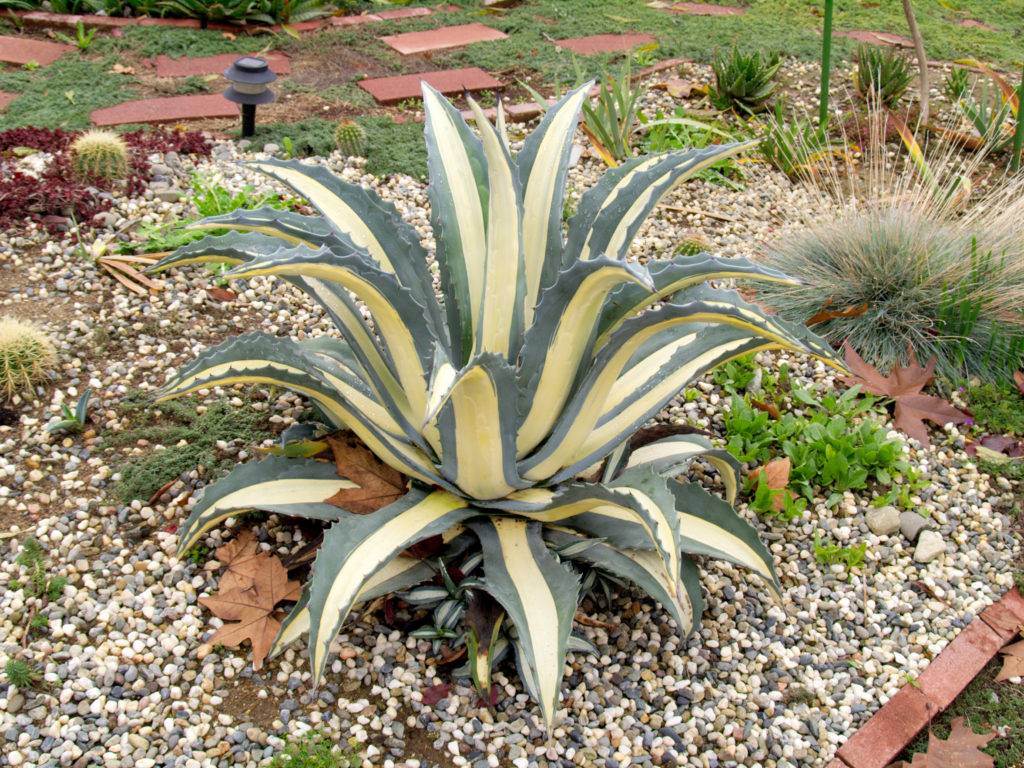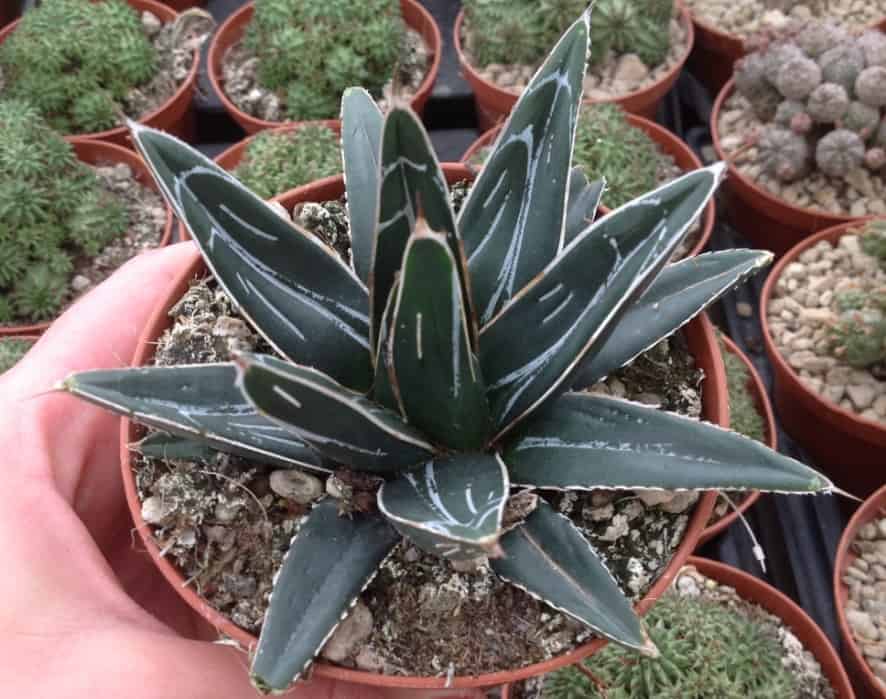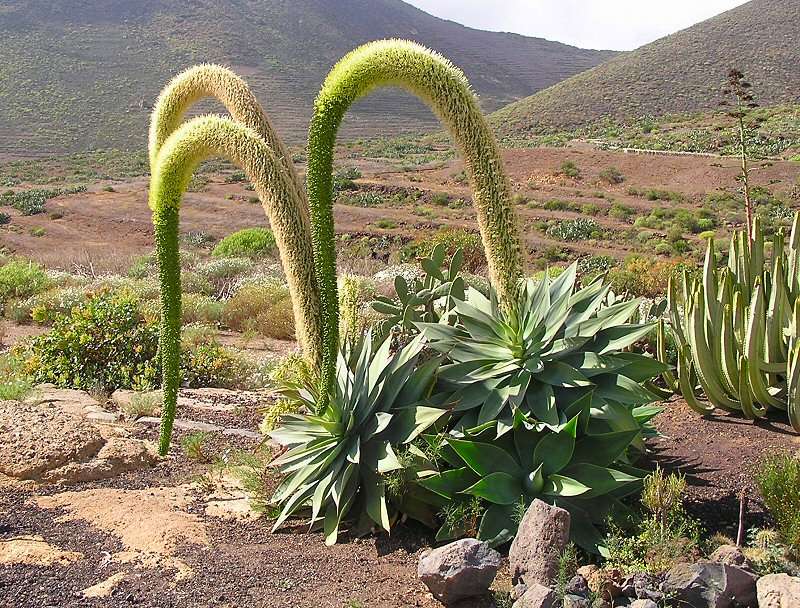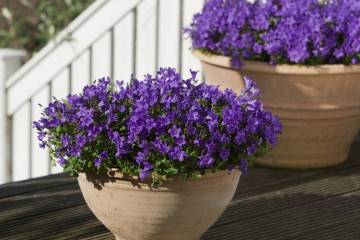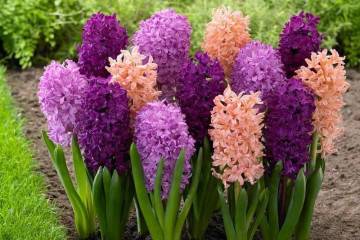Agave - what is this house plant
Content:
The plant is long-lived and originates from the Asparagus family. It does not in any way apply to cactus, although a primary visual similarity is noticeable. What kind of flower is it and how to plant it is described below in the article.
Agave - what is this flower
The genus agave consists of more than 300 species, the region of origin is in Central America and the islands of the United States. In the second half of the 16th century. agave quickly spread in Europe due to the fact that during this period it was introduced by sailors.
Short description
Etymologically, "agave" is a Greek word. One of the translation options is "amazing", which is due to the incredible appearance during the flowering period, when the peduncle can reach 8 m in height. It is believed that agave blooms only once every 10-15 years, which is true in some cases.
Agave is a plant that is a rosette with large leaves of various shapes and slopes, collected at the root. Leaves are usually green in color with different shades depending on the species. As a rule, they are large, hard and covered with white and yellow stripes.
What is made of a flower
Agave has various beneficial characteristics due to which the plant is used in industry.
The preparations made on the basis of the plant can have an analgesic effect, due to which they are excellent as a remedy for bruises, toothaches and pain symptoms of sciatica. Agave juice is great for improving stomach function. Another significant factor in favor of growing a plant is the possibility of its use for economic purposes, for example, as a base for tonics and face masks.
Varieties of home agave
Due to its decorative appearance, agave is widespread as a "home" plant, fitting into the interiors of gardens, greenhouses, and sometimes apartments.
American
A very popular species of the Agave family is a sturdy plant with or without a short stem. This type of agave has basal leaves up to 2 m long. Leaves are standard green with a blue tint and yellow dusting. The diameter of the rosette is 2-3 m.
American agave, due to its size and the presence of sharp thorns at the ends of the leaves, must be correctly placed. Due to the long growth period in the first years of life, the plant can also be kept at home.
Queen Victoria
What is agave can be understood from this variety, since it has the longest growth period. It is also distinguishable from its counterparts by its small size, having dense rosettes up to 45 cm in diameter and short leaves 15-20 cm long. The leaves of this species are dark green triangular in shape, thick and tough with a very sharp end. The leaves have shiny white edges. The rosette is spherical.
Drawn
This agave flower is native to central Mexico. It has smooth, curved and drawn green leaves without thorns 50-70 cm long and 15-20 cm wide. The stem of the plant is powerful, smooth, gray in color, it grows up to a meter in height. The plant blooms in spring, the flowers are a green-yellow dense brush with a length of 1 to 3.5 m.
Thread-bearing
This agave is an evergreen perennial plant. It is symmetrical and medium in size (60-90 cm in rosette diameter). The leaves are dark green, slightly curved, 30-45 cm long and 2.5 cm wide with sharp ends. The leaves are bent upward and form a screw, white fibers are present at their edges.
The height of the base reaches 3.5 m, which is usually strewn with purple or yellowish flowers. After flowering, many of them die, but outgrowths can be from the remaining rosettes. Flowering occurs annually in early summer, but at the same time, some specimens can bloom only once every 30-40 years.
Drunkards
Agave is a plant that is suitable for reproduction at home. It is popular for its small size and sharp red thorns at the ends of its leaves. The drunkard agave is a miniature plant with spatulate, light green leaves that have a blue bloom and jagged edges.
The advantages of this species are its small size and pleasant appearance, which makes it possible to grow it at home. In order for a flower to grow efficiently and in a timely manner, it needs access to sunlight and moderate watering.
Room agave care at home
One of the undoubted advantages of growing agave is that it is quite unpretentious to care for. Regardless of belonging to a particular species, many are interested in learning how agave blooms.
Illumination and temperature conditions
Agave, as a houseplant, does not require constant sunlight and abundant watering (especially in winter). If the plant is kept indoors, then in the summer it must be ventilated, and in the winter it should be provided with sufficient lighting and a moderate temperature.
Watering rules and humidity
The main thing is not to get water into the outlet during watering.
Top dressing and soil quality
Another of the favorable qualities of the plant is its unpretentiousness to the soil. When it comes to growing containers, a medium-sized flat pot is most suitable.
Flower container size
When it comes to growing containers, a medium-sized flat pot is most suitable. In general, the species can grow even in the least favorable areas.
Pruning and replanting
At home, it is necessary to propagate agave from late spring to early summer, if you plan to do this using offspring or cuttings. There is also the possibility of propagation by seeds, but this always requires more effort and time. The direct growth process takes about two weeks.
Bloom
Agave is not a fruit, but a plant that has its own characteristics in cultivation and transplantation. So, every year it is necessary to increase the pot for still young specimens, which, as they grow older, release roots from the flowerpot. The most mature agaves should be replanted every few years. In any case, if there is a need for a transplant (the pot cracked, the roots began to rot, etc.)then it is better to do this in the spring.
As for the flowering of the agave, it is an amazing sight. However, in the house, most likely it will not work to contemplate it, since before that the plant must grow in one place for 10 to 30 years.
Propagation of agave by offspring and cuttings
The most popular way of agave propagation is by offspring, which are formed at the base of the trunk. The process is the separation of the shoots from the main trunk with a shortened remainder of the node. The separated piece of plant must include at least one nodule.
The sprout must be sprinkled with coal powder and planted in a light substance, such as sand. Suitable temperature for raising offspring is 20 ° C. After the sprouts appear, the composition of the earthen mixture must be changed to the following, consisting of:
- turf land;
- leafy land;
- sand.
All parts are taken in equal shares. Watering the transplanted plant can be done on the second or third day. Where agave will grow better can be understood by its natural places of origin, so the pot should be put in a greenhouse for the first time.
Diseases and pests
Among the pests of agave, spider mites, scale insects, thrips and aphids are quite common. One of the most common diseases of this type of plant is root rot, which usually occurs when the conditions and characteristics of cultivation are not observed. The main property for eliminating harm to the plant is moderation of watering.
The perennial agave plant develops a powerful rosette of leaves, and the Mexican variety also forms a fruit. These cactus-like plants have sharp thorns. In some countries, greens are used for food, sugar is made from it. Florists successfully grow agave in an apartment, using simple methods of reproduction and care, but not everyone can wait for flowering, although it is very impressive.

